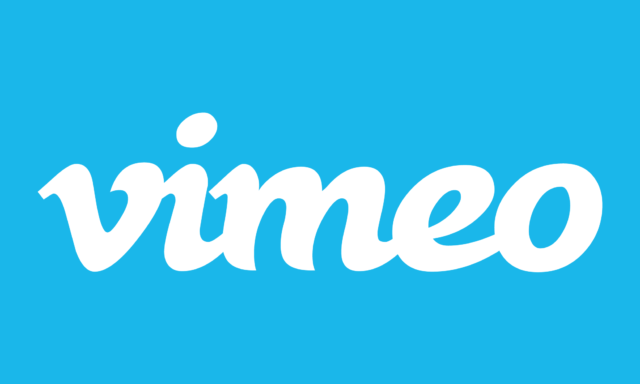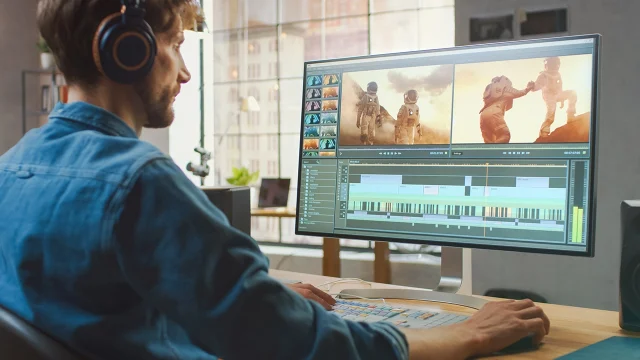
YouTube is the king of online video. When we say the word “video”, most people immediately think of YouTube. This brand is so ingrained in our lives that many don’t even know there are alternatives. This is a problem because there are some platforms where you can post videos and which are actually better than YouTube in some segments. For example, one of them is Vimeo.
Vimeo has grown tremendously in the last 10 years and is one of YouTube’s main competitors. Of course, it has a smaller number of users, i.e. user base, but if you compare it to YouTube then you will realize that it offers some features that the latter does not have. Below we will go through 5 reasons why you should consider uploading a video to Vimeo if you are into video creation.
1. Vimeo Provides Better Video Quality and Encoding

YouTube has a mantra – quantity ahead of quality. Every minute, over 500 hours of material are uploaded to YouTube. Of course, YouTube must process these videos before they become publicly available. To be able to do this, YouTube must balance between compression speed and compression quality.
On the other side of the spectrum, you have a Vimeo that has the opposite philosophy. There, quality is ahead of quantity. This is because Vimeo has strict rules for accepting videos, so there are fewer videos to process. So it will focus that these videos are well processed before they become publicly available. In addition, it uses better video encoding techniques. The video will look better on Vimeo if you publish the same video to YouTube and Vimeo at the same resolution.
2. Vimeo Offers More Prestige

Take a moment to consider what comes to mind when you hear the phrase “YouTube video.” Then repeat the same, only with “Vimeo video”. If you have tried both sites, then you will probably have a different perception of the video, i.e. the perception of these two brands will be radically different.
YouTube is essentially a video dump. You can upload whatever you want to it, as long as that video is not sexually explicit, has no blood, and does not violate certain laws. No one is stopping you from uploading a crappy video in poor quality. You can literally turn on the camera, record anything for two hours, and upload it to YT. Vimeo will not let you do that.
This is, of course, sometimes problematic because on Vimeo, for example, you will not find content related to video games other than maybe a few documentaries that are thematically related to gaming. But you will not find 2 hours of WoW gameplay or gameplay of any of the popular video games for playing, watching, or gambling on at the most reputable online casinos by the link. Regardless, Vimeo is considered a more professional service than YouTube. At least, that is the perception of a large number of people who use it.
If you manage to upload a video to one of Vimeo’s niches and categories, then it is considered to be a good video. That means something. It offers some prestige over YouTube. Vimeo has some of the best short videos you can find online. If you dig in a little on it, we believe you will find something interesting for yourself. And don’t forget that Vimeo has “Staff picks”. It likes to advertise quality videos, and when they choose you to be in that category, it means you have shot and edited something notable. Not to mention that many careers went uphill after their videos appeared in this category.
3. Vimeo Has a More Sophisticated Audience

For the reasons listed above – video quality, strict rules… – Vimeo attracts a different audience than YouTube. Although YouTube has a much greater reach than Vimeo, users of the latter stay longer on the website, are more connected to the content, will leave some constructive comments more quickly, and the like. YouTube has fairly short user retention, and most videos are full of bad and unnecessary comments that no one reviews.
In addition, Vimeo’s audience has different expectations from the video on the said page. As we have stressed, this is best seen in the comments section. YouTube is known for the horrible atmosphere in the comments, which is very often very toxic. Everyone is hating, leaving horrible comments, spamming, arguing, insulting… It is so toxic that many bans comments below the video because they don’t want to read it. On Vimeo, the situation is different. We are not saying it is ideal, but it is much more constructive, mature, and normal. If you are a content creator, this could be a refreshment for you.
4. Vimeo Offers More Artistic Freedom

Two things can be very frustrating for those who create content and upload videos to YouTube. Here we especially mean artistic content. The problem is that videos from YT can disappear for no reason.
The first problem is relatively moderate sexual content. On YouTube, you will find a bunch of explicit content that has been on the website for years and no one is doing anything about it. You will also find art content with a bit of adult content within it that YT will remove because it is too “suggestive”. Vimeo will not remove your artistic content, even though there are some “18+” elements in it, as long as it is part of the art.
Another problem on YouTube is music. YouTube scans each video and looks for music that is potentially in it. If it recognizes that it is a copyright-protected song or assumes that it could be protected, it removes the work immediately. It has a very aggressive policy that we could describe as “silence first, fix later”. Even if you are authorized for particular music, you will need to specifically prove it to YouTube before the video sees the light of day. There are no such problems with Vimeo.
5. Vimeo Has a Bunch of Unique Features

If you don’t care about all of the above, stay with us a little longer. Vimeo also offers a bunch of handy features that are better than on YouTube. In terms of features and flexibility, Vimeo is better in a bunch of segments than YouTube, and some of them are: Replace the video, but keep the URL: This is one of the best things about Vimeo. You can replace an existing video with a new one without losing the URL, thus retaining all the likes, comments, statistics… and without ruining the video that is potentially embedded on another website.
Protect video with password: You can upload a video to Vimeo and protect it with the password. Anyone who knows and has it can unlock the video. The others cannot view it. It is very useful and something missing on YouTube. There you can only post the video to public, private, unlisted.
“Domain-restricted embeds”: Do you know how you can upload Vimeo and YouTube videos (embed) to a website? On Vimeo, you can set a domain (for each separate video) on which pages Vimeo video can be embedded and on which pages it cannot. Again, very useful if you have your videos hosted on Vimeo and want to show them on your website, but don’t want others to ‘steal’ your videos.
Web Player branding: Vimeo allows you to modify the HTML5 web player’s video by inserting your logo and “branding” when you upload a Vimeo video to a web page. On the other hand, embedded YT videos all look identical and don’t offer the slightest bit of personalization.
Advanced analytics: Depending on your subscription level, you can get different levels of analytics, custom reports, and the like.
Make money from viewed videos: “Vimeo on demand” allows you to create “video on demand (VOD)” that you can sell. Let’s say you made a documentary and you charge $ 1 per viewing. You can set up a VOD page, restrict in which countries you want to sell video (you don’t have to restrict if you don’t want to) – and that is it. The one who pays can watch the video, and you are left with 90 percent of the earnings.












